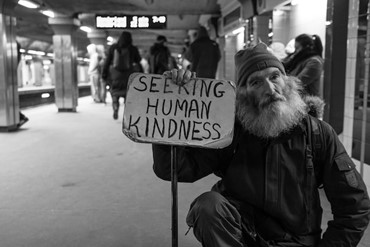Kaye Turpin works as an advocate for the homeless, and those struggling with addiction. In the following article, Kaye Turpin discusses the tireless efforts and impactful strategies that define homeless outreach programs – from local community initiatives to broader systemic changes.
In the words of Timothy Pina, an American author and human rights advocate, “Homelessness is neither a disease nor a crime, but a very serious problem.”
The United Nations has reported that there are 1.6 billion homeless individuals worldwide, with about 15 million people being forcefully evicted every year.
Kaye Turpin says that although substantial in number, they are considered a minority in society – helpless, voiceless, and powerless. Fortunately, the homeless are not alone in their fight; they have advocates who tirelessly champion their rights.
Below, Kaye Turpin explains more on the dedicated advocacy work that goes into creating and sustaining programs that address the unique needs of the homeless population, highlighting the unsung heroes – the homeless advocates – who are behind these initiatives.
Championing Change: Unveiling the Role of Homeless Advocates with Kaye Turpin
An advocate is a person who actively supports and promotes the interests of an individual or an entity.
In the aspect of homelessness, these activists work to address various aspects of the issue through different initiatives which include awareness campaigns, policy changes, legal action, and direct services. The collective efforts of these advocates are crucial in addressing homelessness and empowering homeless individuals.
But where do these modern-day heroes come from?
Kaye Turpin explains that homeless advocates come from different organizations and backgrounds. The following are various types of advocates:
- Individual Advocates: These individuals are passionate about the cause and are active in raising awareness, supporting local homeless populations, and advocating for policy changes.
- Non-Governmental Organizations (NGOs): These non-profit organizations work to provide the homeless with services, support, and advocacy initiatives. Prominent examples include the Homeless Advocacy Project and the National Coalition for the Homeless.
- Legal Advocacy Groups: These organizations utilize legal means to advance and protect the rights of homeless people. They also aim to challenge discriminatory policies. A good example is the American Civil Liberties Union (ACLU).
- Government Agencies: Some agencies and departments of the government focus their work on creating programs and policies for the homeless, including social services and housing initiatives.
- Service and Shelter Providers: These are also organizations that provide support by offering direct services such as food, shelter, healthcare, and employment assistance.
- Faith-Based Organizations: These are organizations or religious institutions that show support for the cause by running food programs, shelters, and outreach services for affected individuals or families.
Kaye Turpin says that there are also other types of advocates who work to advance specific aspects of the cause, including housing, education, medical, mental health, youth, and more.
The Vision and Implementation of Homeless Programs
Creating a homeless advocacy program is no easy feat, and it isn’t cheap, either.
 Programs for the Homeless
Programs for the Homeless
Outreach professionals embark on a comprehensive journey to address a specific challenge within their community related to homelessness. This can range from the absence of mental health support to inadequate job training programs.
The subsequent step involves identifying the key stakeholders and target audience, which encompasses community organizations, local businesses, government officials, service providers, and the homeless themselves. Through a research phase consisting of interviews and surveys, advocates gather essential data to shape the program’s mission and goals.
With a refined plan in hand, Kaye Turpin explains that advocates then initiate various communication activities to engage stakeholders and the target audience. This may involve social media campaigns, town hall meetings, or outreach events.
Prior to any activity, advocates diligently work on allocating the necessary funds and resources for the initiatives. This encompasses staffing, volunteers, venues, equipment, and more. Non-profit organizations typically secure funding from various sources, including government support, charitable institutions, companies, and private individuals.
Establishing a clear timeline for the entirety of the advocacy program follows suit. As the program progresses, advocates meticulously evaluate their progress against the set objectives. This assessment involves gauging shifts in awareness and support.
Kaye Turpin also notes that feedback and available data play a crucial role in this evaluation process. Additionally, advocates must remain adaptable, ready to adjust the program’s activities, strategy, or messaging in the event that it fails to demonstrate the desired impact.
Homeless advocates are indeed modern-day heroes – they are the driving force behind the initiatives that have changed the lives of the homeless for the better.











